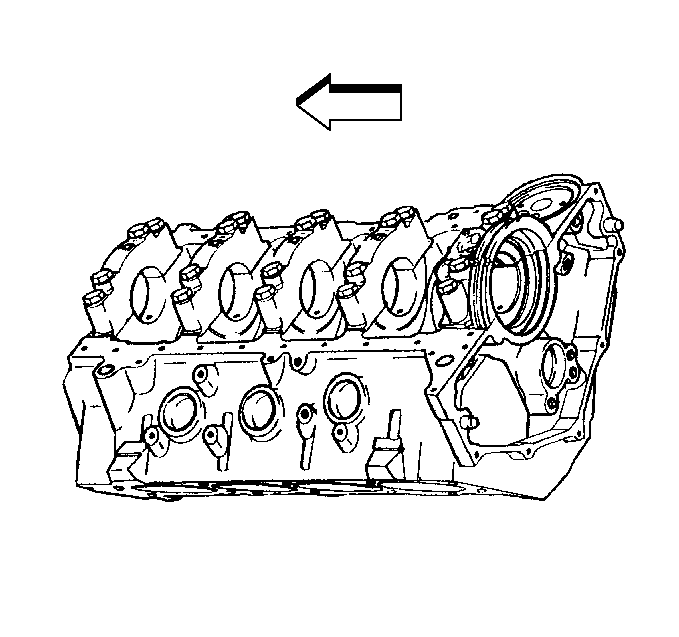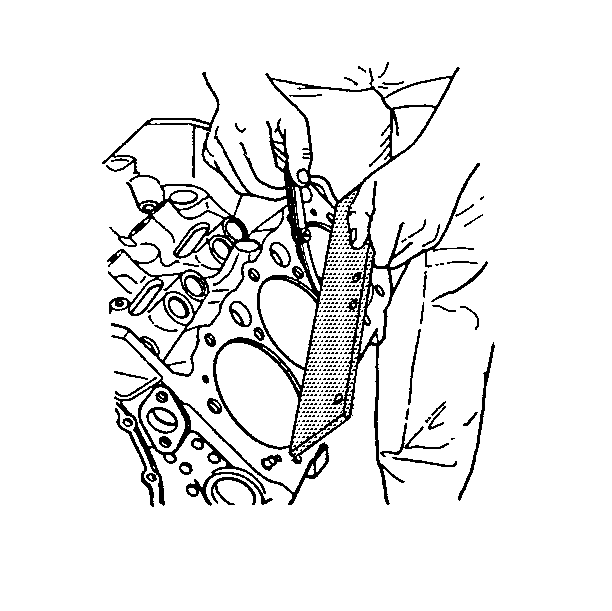
- Boil the cylinder block
in caustic solution.
- Flush the cylinder block with clean water or steam.
- Clean the following areas:
| • | All gasket surfaces; Refer to Replacing Engine Gaskets |
| • | Cylinder bores, remove excessive cylinder ring ridge as required |
| • | Oil galleries, remove all sludge or restrictions |
| • | Scale deposits from the coolant passages |
| • | All dirt or debris from threaded bolt holes |
Caution: Wear safety glasses in order to avoid eye damage.
- Dry the block with compressed air.
- Lubricate the cylinder bores with clean engine oil to prevent
rusting.
- Inspect the engine block for the following conditions:
| • | Gasket surfaces for deep gouges or other damage |
| • | Crankshaft bearing bores for wear |
| - | The surfaces where the crankshaft bearings contact the crankshaft
bearing bore must be smooth. |
| - | All crankshaft bearing bores must be round and uniform in inside
diameter (ID) at all the bearing supports. |
| - | If a crankshaft bearing cap is damaged and requires replacement,
refer to Crankshaft and Bearings Clean and Inspect |
| • | Camshaft bearing bores for wear or damage |
| • | Valve lifter bores for scuffing or wear |
| • | Engine block for cracks or other damage |
| • | Cylinder walls for scoring or gouges |
| • | Coolant jackets for cracks |
| • | Crankshaft bearing webs for cracks |
| • | Engine mount bosses for damage |
| • | The oil passages for restrictions |

- Inspect the engine block
cylinder head deck for flatness using a straight edge and a feeler gauge.
The surface must be flat within 0.10 mm (0.004 in).


